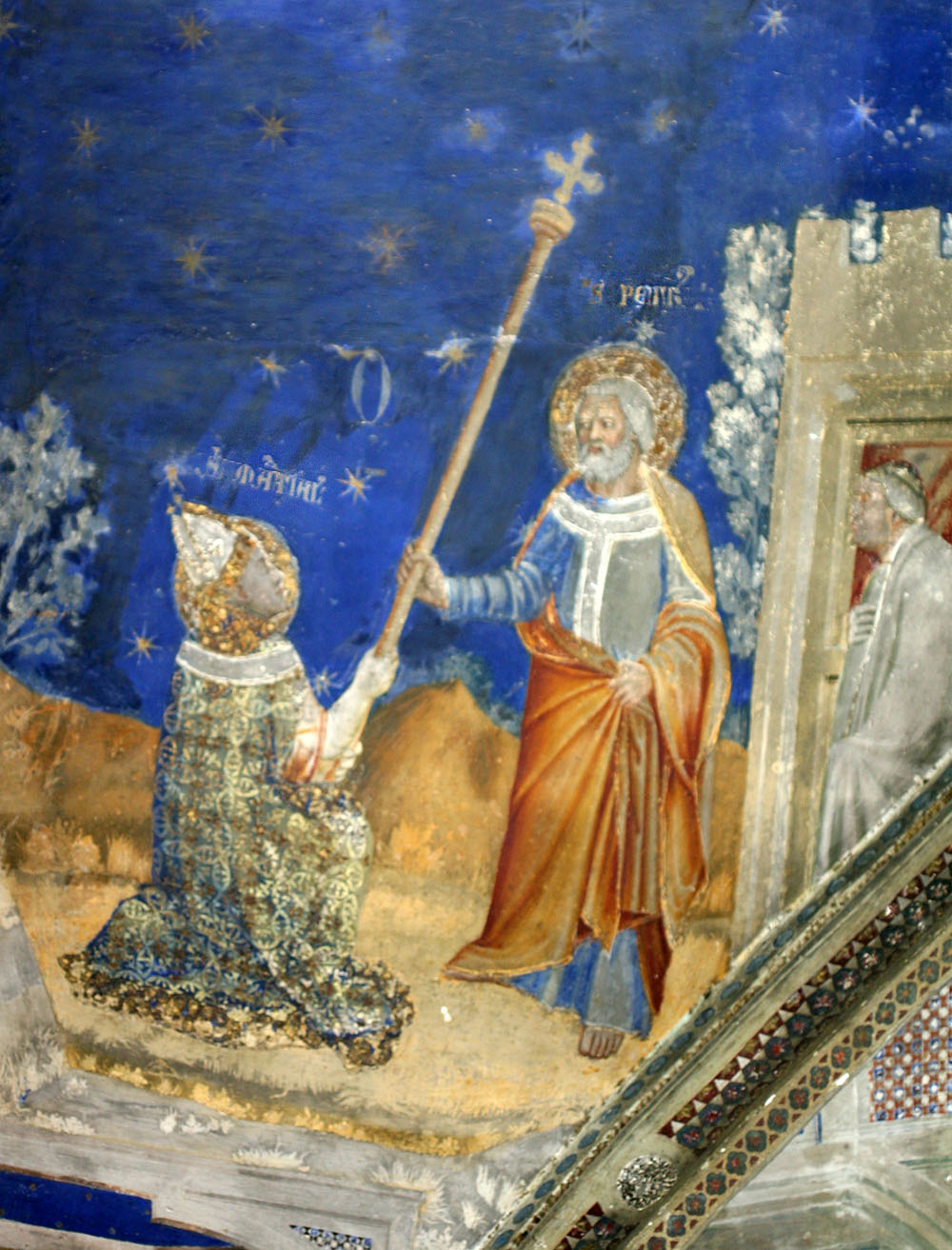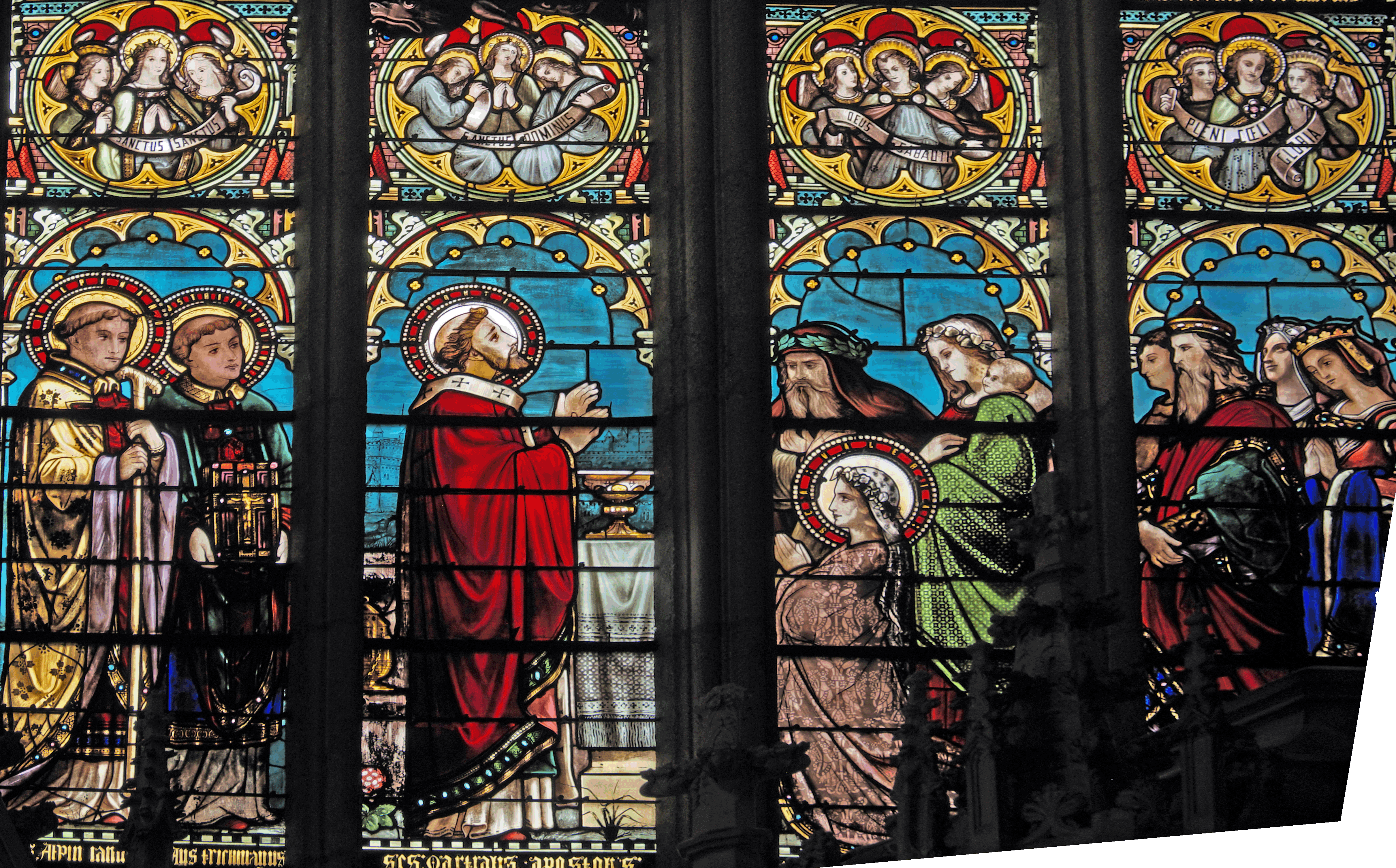Later, a "prose rythmée" life of the saint backdated his mission to the first century and had him sent to Limoges by St. Peter himself. In this account one of the priests dies on the journey to Limoges, so Martial rushes back to tell Peter. Peter gives him a staff and says to touch the priest with it and he will be revived. This works, the three proceed to Limoges, and they convert large numbers to the faith. One of the converts is a young noblewoman named Valeria who is martyred for breaking off her engagement to her pagan fiancé. Upon his death, Martial is buried beside her in a cemetery outside the city, joined years later by the two priests.2
In the version that finally arrived on William Caxton's desk in the 15th century Valeria has a mother named Susanna who had been the first person in Limoges to host the missionaries. Valeria's fiancé is replaced by a wicked "Duke Steven" who arrives in Limoges and determines to "have his will of her." But after having her beheaded he repents and becomes a Christian himself. Further miracles are added, and the two companion priests get the names we see inscribed beneath their portraits on the stained glass above: Alphinian and Austridinian.3
In the stained glass, St. Martial is saying Mass with those two companions. The white scarf embroidered with crosses reflects a belief among some Limoges clergy that his mission to the city merits him the status of "apostle," or even that he was one of the seventy-two disciples of Christ mentoned in Luke 10.4
In this image, Austridinian is dressed as a deacon and holds the gospel book from which deacons read during the Mass. But in Gregory and in the "prose rythmée" both are priests; in Caxton, they are merely "disciples."
On the other side of the altar, Valeria (kneeling, with halo) is joined by a number of well-dressed onlookers who may at the same time represent the crowds converted by Martial and the Aquitanian nobility of subsequent eras.
Prepared in 2020 by Richard Stracke, Emeritus Professor of English, Augusta University.
Stained glass window in the church of St. Michel-les-Lions, Limoges. Source: Wikimedia Commons
OTHER IMAGES

St. Peter gives St. Martial a staff with a cross at the top. With this, he says, Martial will bring St. Austridinianus back to life. (See the description page.)

In this stained glass in Limoges Cathedral St. Martial holds the cross-topped staff and St. Valeria presents her decapitated head. Source: (See the description page.)
ATTRIBUTES
- For St. Martial, a mitre and crozier or a mitre and a staff topped by a cross. In some images the mitre is somewhat lower in height than one usually sees.
NAMES
- In Caxton's English, Martial is "Marcial" and Valeria is "Valerienne."
DATES
- St. Martial's feast day: June 30
- St. Valeria's feast day: December 9
BIOGRAPHY
- Butler, II, 675-76.
- Glory of the Confessors, 849-50.
- Acta Sanctorum, June vol. 5, 751-73.
- Bellet, 32-40.
NOTES
1 De Gloria Confessorum, chapter 27 (Migne, 850, van Dam 23-24).
2 Bellet, 34-40. Acta Sanctorum, June vol. 5, 562.
3 Read Caxton's life of St. Martial at this page.
4 Acta Sanctorum, June vol. 5, 535-36.
